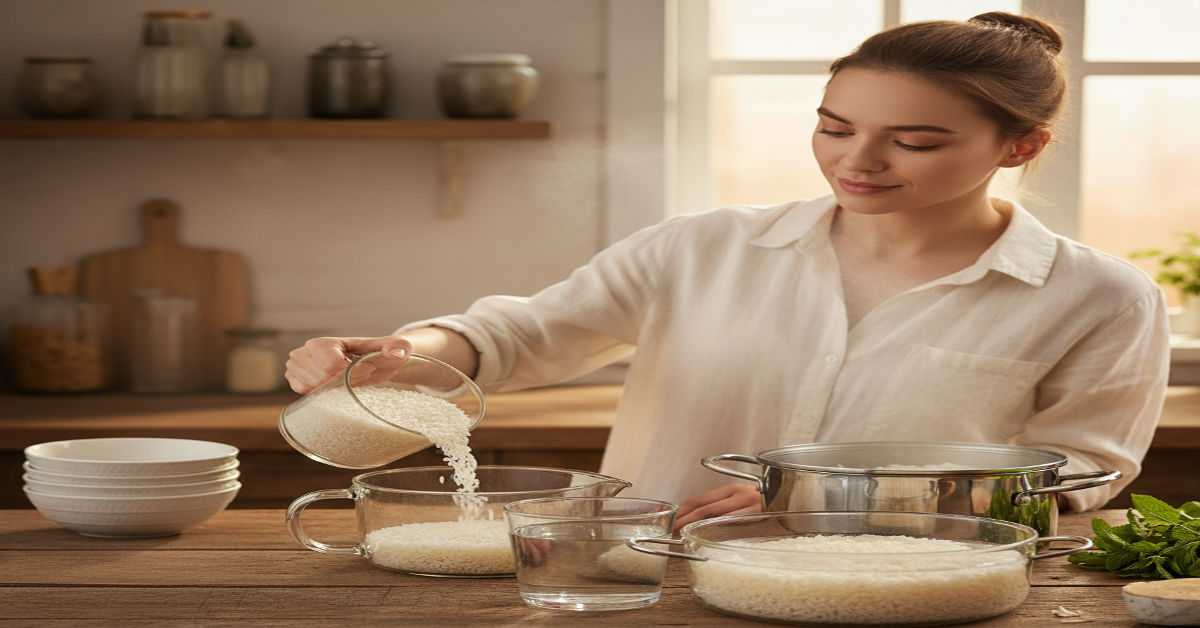Rice is a staple in many households around the world. It’s versatile, filling and can be paired with countless dishes. However, one common challenge home cooks face is achieving that light, fluffy texture we all crave. The secret? The perfect rice to water ratio.
Understanding how much water to use for your type of rice can make or break your dish. Too little water leads to dry grains while too much creates a mushy mess. If you’ve ever found yourself staring at your pot of overcooked or undercooked rice in frustration, you know just how crucial this measurement is.
In this guide, we’ll explore the science behind the ideal ratios for different types of rice and share practical tips to help you master cooking perfectly fluffy rice every time. Say goodbye to kitchen mishaps—let’s get started on making your next meal delicious!
Understanding the Science behind Rice and Water Ratio
The rice to water ratio is crucial for achieving perfectly cooked rice. This balance determines the texture and moisture level of the grains.
Rice absorbs water during cooking, swelling and softening as it releases starches. The heat causes these starch molecules to gelatinize, creating a tender yet fluffy result when done right.
Different types of rice have unique structures that require varying amounts of water. Long-grain varieties like basmati need less liquid compared to short-grain types such as sushi rice, which absorb more due to their higher starch content.
Understanding this science helps home cooks master the art of cooking rice consistently well. Knowing how each type reacts can transform a simple side dish into an exceptional component of any meal.
Different Types of Rice and their Recommended Ratios
There’s a world of rice out there, each type bringing its own texture and flavor. Understanding these varieties can elevate your cooking game.
Long-grain rice, like basmati or jasmine, typically requires a 1:1.5 ratio. This allows the grains to remain separate and fluffy after cooking.
Medium-grain rice is slightly stickier than long-grain types. For varieties such as Arborio or short-grain sushi rice, a 1:1.25 ratio works best, perfect for risottos and sushi dishes.
Brown rice needs more water due to its fibrous bran layer. A common recommendation is a 1:2 ratio, making it both nutritious and hearty.
Wild rice behaves differently altogether; it usually calls for about 1:3. This nutty variety takes longer to cook but adds depth to any meal.
Knowing these ratios ensures that every dish you create has the right texture and taste profile you’re aiming for.
Step-by-Step Guide on How to Measure Rice and Water Ratio for Perfect Fluffy Rice
Measuring the right rice to water ratio is essential for fluffy, perfectly cooked rice. Start by selecting your type of rice each variety has its own needs.
For long-grain white rice, use a 1:2 ratio—one cup of rice to two cups of water. For short-grain or sushi rice, adjust slightly to a 1:1.5 ratio.
Rinse your rice under cold water until it runs clear. This removes excess starch and prevents stickiness. Drain well before cooking.
Next, pour the rinsed rice into your pot or cooker. Add the appropriate amount of fresh water based on your chosen ratio.
If you prefer softer grains, add a splash more water; for firmer texture, reduce slightly. Once measured, bring everything to a boil before reducing heat and covering tightly.
Let it simmer undisturbed until all the liquid absorbs. Fluff with a fork afterward for that perfect finish!
Common Mistakes and How to Avoid Them
One common mistake is using the wrong rice-to-water ratio. Each type of rice requires a different amount, and sticking to general guidelines can lead to sticky or undercooked grains.
Another frequent error is rinsing rice improperly. If you don’t rinse enough, excess starch will create a gummy texture. Rinse until the water runs clear for best results.
Ignoring resting time after cooking can also ruin your dish. Letting the rice sit covered for about 10 minutes allows it to steam and settle, enhancing its fluffiness.
Lifting the lid too soon during cooking releases steam crucial for proper cooking. Resist that urge; your patience pays off with perfectly cooked rice every time!
Tips for Adjusting Ratio for Different Cooking Methods (stove, rice cooker, Instant Pot)
Cooking rice can vary widely depending on your method. For the stove, a common ratio is 1 cup of rice to 2 cups of water. This works well for white rice but may require slight adjustments based on the type.
When using a rice cooker, many models automatically adjust for you. Generally, sticking with the same 1:2 ratio gives great results. However, some cookers have specific settings that might suggest different measurements.
Instant Pots are another game-changer in terms of convenience and speed. Here, a typical ratio is often closer to 1:1.25 or even less for certain types of rice due to pressure cooking’s efficiency.
Always remember that altitude and humidity affect these ratios too—don’t hesitate to tweak them slightly as needed!
Recipes using Perfectly Cooked Rice
Perfectly cooked rice can elevate a variety of dishes. One classic option is fried rice, where you can toss your fluffy grains with vegetables, soy sauce, and protein of choice for a vibrant meal.
Alternatively, consider making a creamy risotto. Arborio rice absorbs broth beautifully and creates that signature velvety texture when stirred continuously. Add mushrooms or saffron for an extra layer of flavor.
For something refreshing, try rice salad. Combine chilled brown or jasmine rice with chopped veggies, herbs, and a zesty vinaigrette for a nutritious side dish perfect for summer gatherings.
Don’t overlook the power of sushi! Use sticky short-grain rice seasoned with vinegar to craft delicious rolls filled with fresh fish or veggies. Each bite showcases the importance of getting that ratio just right—soft yet firm grains hold everything together seamlessly.
Conclusion:
Perfecting the rice to water ratio can transform your cooking experience. With just the right measurements, you unlock the secret to achieving fluffy, delicious rice every time. Understanding how different types of rice respond to varying amounts of water is essential for any home cook.
Whether you’re whipping up a quick weeknight dinner or preparing an elaborate feast, mastering this technique elevates your dishes significantly. Armed with knowledge about common mistakes and adjustments based on your cooking method, you’ll have confidence in your culinary skills.
Experiment with recipes that highlight perfectly cooked rice, and watch as it becomes a staple in your kitchen repertoire. The journey toward exceptional rice does not end here; it’s an ongoing adventure filled with flavors waiting to be explored. Enjoy each step as you refine your approach and delight family and friends at every meal.







